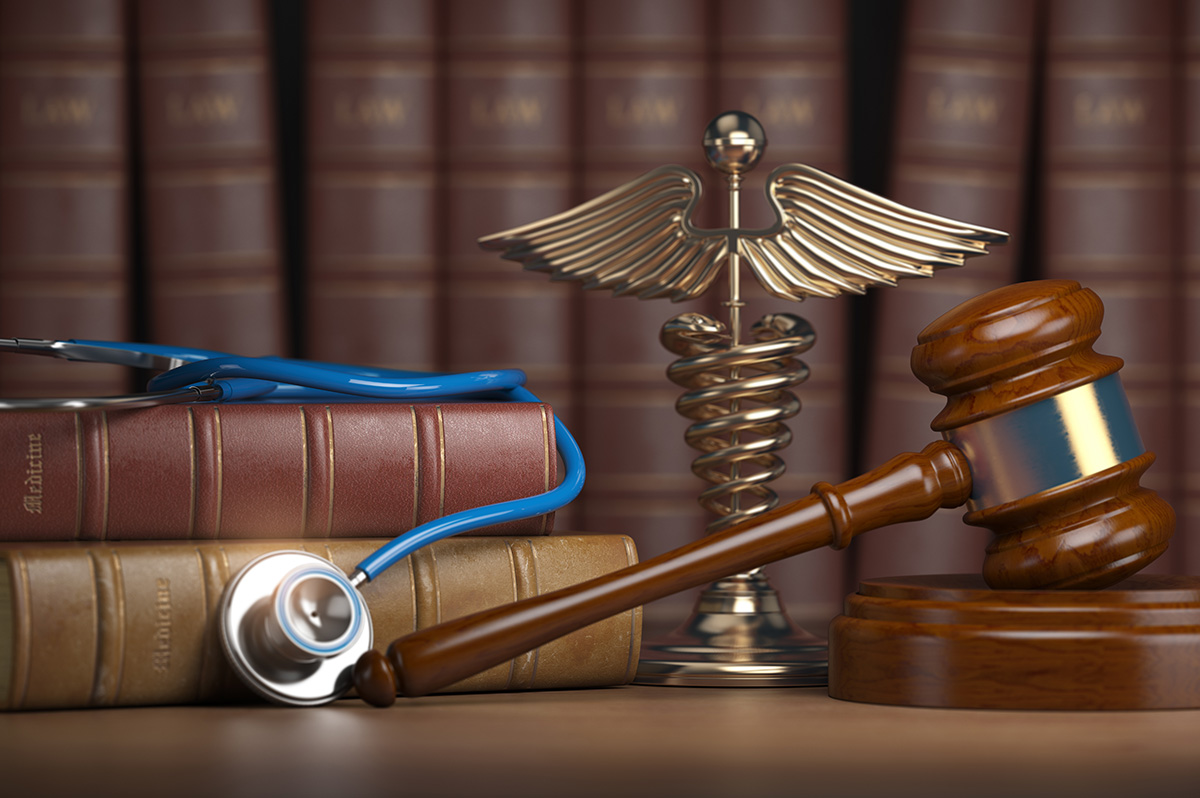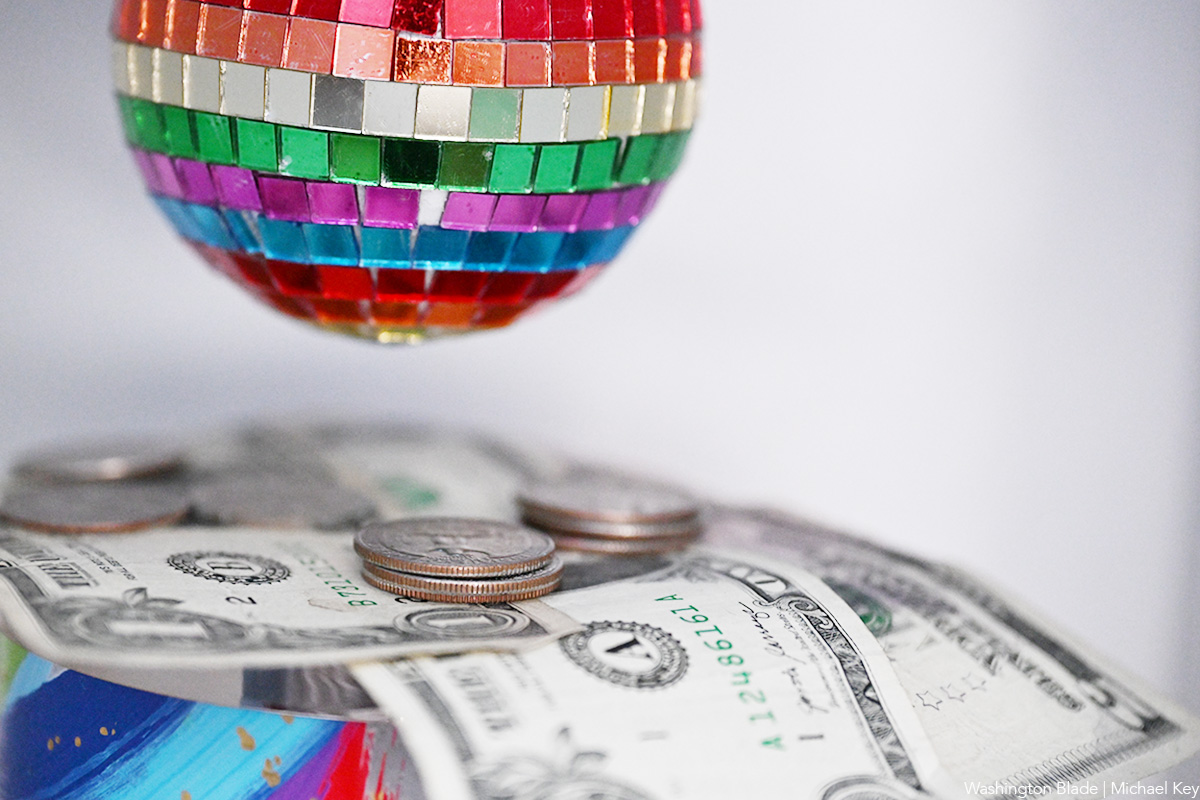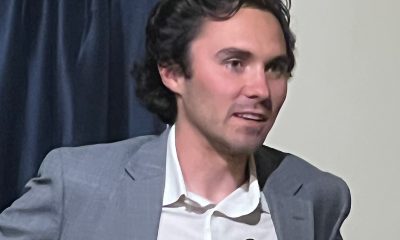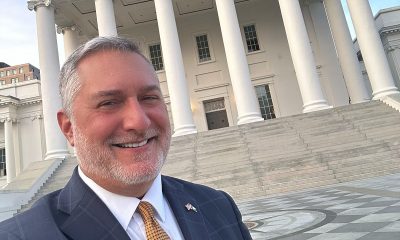Opinions
Social media can be a safe space for LGBTQ youth
Whether on Instagram, YouTube or TikTok, queer youth are able to connect with stories and insight that they not only relate to, but can use to help cope with and resolve their own struggles.

With all the bad press social media gets when it comes to teens, its significant benefits to LGBTQ youth – including relating to others like themselves – can be overlooked, mental health experts and queer teens say.
Members of racial and ethnic groups who have long been underrepresented or misrepresented in the media often say they find it empowering to follow and watch influencers with whom they can relate. In turn, they feel more understood and accepted.
Queer social media influencers are willing to talk about topics general audiences may be uninterested in, but what can be frequent occurrences in the queer community, such as disrespect, bullying, misgendering and loneliness. Influencers draw from their own life experiences. Whether on Instagram, YouTube or TikTok, queer youth are able to connect with stories and insight that they not only relate to, but can use to help cope with and resolve their own struggles.
A September 2022 meta-analysis of 26 studies in the Journal of Medical Internet Research found social media may help LGBTQ youth with connection to LGBTQ communities, identity management and support from peers, which all contribute to better mental health and well-being. However, researchers concluded that more robust studies are needed.
Don McClain is a 16-year-old Baltimore youth advocate, social media entrepreneur and artist of multiple mediums, who is nonbinary and uses they/them pronouns. They said it’s important for them to “be able to engage with queer influencers because it shows me that it’s okay to be authentically me.”
“It makes me feel loved and even makes me smile,” they said. “Seeing people like you always helps.”
McClain’s favorite queer influencers include Jewish social justice and LGBTQ+ activist Matt Bernstein, who has 1.3 million Instagram followers, trans woman Zaya Perysian, who chronicled her transition on TikTok, where she has 4.5 million followers and Ve’ondre Mitchell, a trans woman with 6.6 million TikTok followers who is an advocate for Black and transgender people.
Engaging with queer content creators can help viewers with acceptance, reassurance, and even safety. And it can provide answers to the questions that frequently overwhelm queer youth.
Washington, D.C.-based clinical psychotherapist Rose Shelton, who owns Your Thought Center in Washington, D.C. and often treats LGBTQ patients, discussed mental health trends in queer youth.
”Questions around self-worth, anxiety – usually associated around acceptance – violence and violent response…contribute to high levels of depression,” said Shelton.
She also cited insecurity around who’s “a real ally,” “a verbal ally” and “an actual actionable ally.”
This can have deadly consequences.
Forty-five percent of LGBTQ youth seriously contemplated attempting suicide between September of 2020 and December 2021, according to survey of LGBTQ youth conducted in late 2021 by the LGBTQ suicide-prevention nonprofit The Trevor Project. The survey also found that 78% experienced symptoms of anxiety in the past year and 58% experienced symptoms of depression.
Of the LGBTQ youth surveyed by The Trevor Project, 45% were of color and 48% identified as transgender or nonbinary.
The study, released last year, also found that 89% of LGBTQ youth reported that seeing LGTBQ representation in TV and movies made them feel good – a key indicator of the importance of representation to queer youth and seeing yourself reflected in the media.
“The fact that very simple things — like support from family and friends, seeing LGBTQ representation in media and having your gender expression and pronouns respected — can have such a positive impact on the mental health of an LGBTQ young person is inspiring, and it should command more attention in conversations around suicide prevention and public debates around LGBTQ inclusion,” Amit Paley, Trevor Project’s CEO, wrote about the survey.
These serious trends in mental illness for queer youth are influenced by a variety of factors, but a primary issue is not feeling accepted, which is largely due to a lack of acceptance at home, the report concluded. The lack of adequate representation in media including television and film makes matters worse.
Representation is important, but incomplete if it does not accurately paint a whole picture, experts say. Representation in traditional media, such as in books, films, and shows for the queer community often presents a portrayal that’s different from reality. In roles beyond the typical typecast queer character, the focus is usually on sensationalizing the struggle to come out or the struggle to combat anti-LGBTQ action.
Canadian writer Katelyn Thomson published an analysis of LGBTQ representation in TV and film in 2021 in Ontario-based Wilfrid Laurier University’s Undergraduate journal, Bridges.
“Ultimately, anxious displacement is how TV shows try to ‘normalize’ the lives of LGBT characters,” Thomson wrote. “However, the process ends up taking away from the identity of the LGBT characters and enforces negative codified stereotypes of LGBT people and their lives.”
While film and television depictions of the community can cause inaccurate portrayals, having queer representation is crucial to queer youth to feel accepted and allow them explore different identities and expressions.
“When used correctly, media can be a vital tool for representing, accepting, and discussing minority groups in society,” Thomson said.
McClain agrees.
“I believe queer youth can be better represented in the media through the displaying of our stories and breaking the stigma around our everyday existence,” they said. “For instance, we need more accurately queer characters and not the ones who are poorly stereotyped.”
So while there is frustration with social media, there are benefits too, especially because it lacks some of the flaws that can arise with queer representation in other forms of media, experts say. Social media can help break through the often one dimensional narratives and depictions of the community presented in film and television through its authenticity. Rather than the creation of a writer or director, it is more often an expression of raw authenticity. Queer influencers shouldn’t be taken as a way of how you should feel, how you should present yourself or how you should look, but instead as a way of seeing that there are many ways of doing so, making it beneficial to follow multiple queer influencers.
“I think sometimes the reason it’s important for social media, instead of…through media itself, is that media also has its own bias,” Shelton said. “And it loves to create stories and narrations and create characters out of people. So with social media, a lot of times people are just presenting their true self.”
Through different faces, forms, and presentations, queer influencers offer an impressive look at queer culture and talent. Here’s a look at some of them:
Noah Schnapp (He/Him)
The 18 year old actor, Noah Schnapp, is mainly known for his role as Will in the wildly popular Netflix series, Stranger Things. Noah is not only known for his acting, but also his very popular TikTok and Instagram accounts. He has cultivated more than 50 million followers between both accounts, where he often posts funny videos, TikTok dances and pictures with his castmates and friends. The Gen Z star recently came out as gay, sparking many of his co-stars, friends and fans to share their positive messages to Noah on social media. Seeing celebrities congratulated for accepting and embracing their sexuality helps other queer youth feel not only more represented in their favorite media but also confident in themselves knowing that their sexuality is something to celebrate and share.
Bretman Rock (He/Him)
Bretman Rock is a 24 year old Filipino beauty influencer, who is openly gay. He currently lives and produces content from Honolulu, Hawaii. His YouTube channel, which has more than 8 million subscribers, includes comedic lifestyle and beauty videos along with content including his family, friends and collaborations with other influencers. He also has over 18 million followers on Instagram as well. His charismatic and energetic personality and loyal fan base has helped him win many influencer awards and become the first gay man on the cover of Playboy magazine.
Tom Daley (He/Him)
The British gold medalist diver and openly gay 28 year-old has become famous not only for his incredible athletic capability but also his internet personality. He has over 3.2 million followers on instagram and is known for his lifestyle, cooking and knitting content. He is a father to one child, married to American screenwriter Dustin Lance Black and very open and proud of his sexuality.
Dylan Mulvaney (She/They)
The 26 year old trans influencer began to rise to fame on TikTok with their viral series, “Days of Girlhood” that documents each day of Dylan’s transition. The series began to become so popular it has helped Dylan generate 10.8 million followers on TikTok. Beyond being a content creator on TikTok, Dylan is also an actress, comedian, model and trans rights activist who was recently featured in what’s been described as a “polarizing partnership” with Bud Light.
Sarah Schauer (She/They)
Sarah Schauer is a popular queer social media influencer known for her Instagram and TikTok accounts, YouTube videos and podcasts with influencer Brittany Broski. She is also known for her previous Vine account. Sarah’s lifestyle and comedic videos helped her grow her fan base into what it is today – more than 3 million on the three social media platforms combined.
Emily Hawkins and Shane Gomez are juniors at Annandale High School working with the DMV-based Youthcast Media Group. YMG founder and former USA TODAY health policy reporter Jayne O’Donnell contributed to this report.
Opinions
Navigating employer-sponsored health insurance, care
One in four trans patients denied coverage for gender-affirming care

Even though 86% of transgender Americans have health insurance, one in four reported being denied coverage for gender-affirming care in the 2015 and 2022 U.S. Transgender surveys. These denials can occur when an insurance plan contains a categorical exclusion of gender-affirming care. It is important to note that transgender employees who receive insurance coverage through their employers are entitled to legal protections.
Employers are responsible for ensuring that the insurance plans they provide do not violate any laws, including anti-discrimination laws. In 1983, the Supreme Court ruled that under Title VII of the Civil Rights Act of 1964, employers are legally required to provide employees with equal pay and benefits, including health insurance. This protection now extends to transgender employees after the Supreme Court’s ruling in Bostock v. Clayton County (2020), which clarified that sex discrimination under Title VII includes gender identity discrimination.
Since Bostock, several transgender employees have successfully sued their employers for discrimination because they were denied coverage of gender-affirming care by their employers’ insurance. While employers can be held liable under Title VII, it remains unclear whether insurance companies will be held liable under Section 1557, the antidiscrimination provision of the Affordable Care Act (ACA), in the future.
Most—if not all—courts have ruled that employers can be held liable for choosing insurance plans with categorical exclusions of gender-affirming care. A categorical exclusion is when an insurance plan has a blanket ban of coverage for certain services. Although discrimination cases generally require proof of intent to discriminate, it is not required of transgender employees because categorical exclusions of gender-affirming care are facially discriminatory (i.e. the policy is explicitly and obviously discriminatory in nature).
In Kadel v. Folwell (2024), the Fourth Circuit court considered the Fourteenth Amendment, Title IX, and ACA claims in a consolidated case considering two state health plans: the State of North Carolina’s insurance plans for teachers and West Virginia’s Medicaid program. The Fourth Circuit court held that it is impossible to ban coverage of gender-affirming care without discriminating against transgender people because (1) gender dysphoria is a legitimate medical diagnosis which requires medically necessary treatment; and (2) the services provided under gender-affirming care are also provided to cisgender patients for other medical diagnoses. In short, there is sufficient evidence of discriminatory intent because categorical exclusions of gender-affirming care are facially discriminatory. Under Kadel, the Fourth Circuit also ruled that a policy does not have to explicitly exclude transgender patients. “Rewording the policies to use a proxy,” like sex changes or sex modification, is still facially discriminatory.
Along a similar vein, in Lange v. Houston County (2024), the Eleventh Circuit court found that the Sheriff’s Office’s categorical exclusion of gender-affirming care was a violation of Title VII. Agreeing with the reasoning in Kadel, the court cited a 1991 Supreme Court Case which ruled that proof of intent to discriminate is not needed for facially discriminatory policies. The court also held Anthem Blue Cross liable because third-party administrators in the Eleventh Circuit (i.e., Alabama, Florida, and Georgia) can be held liable as an employer if they make employment decisions as the authorized agent of an employer. However, this decision is unique to the said jurisdictions, and the liability of third-party administrators/insurance providers remains generally unclear. Moreover, the decision is not final because the court granted an en banc appeal, and a panel of all twelve judges re-heard the case in February 2025. The decision after re-hearing remains to be seen.
Recently, Executive Order 14168 and the EEOC’s motion to dismiss its lawsuit against Harmony Hospitality on behalf of a transgender worker prompted concerns over transgender employees’ ability to bring federal discrimination claims. While such concerns are understandable, there has yet been any mandate prohibiting the EEOC from issuing right to sue to transgender individuals. In other words, even if the EEOC may not investigate and file lawsuits on behalf of transgender individuals, it does not bar private parties from doing so. Ultimately, the executive branch alone does not have the power to make changes to the Constitution or any federal statutes. It is up to the legislatures to amend laws and the Constitution, and courts to interpret and rule on constitutionality.
Protections Against Discrimination by Insurers Under Section 1557 Remain Unclear
While employers can be held liable for categorical exclusions of gender-affirming care, employees may be less likely to find relief for legal claims against insurers regarding discrimination on the basis of gender identity. Since Bostock, courts have found insurers liable for denying coverage of gender affirming care under Section 1557 of the ACA, extending sex discrimination to include gender identity. Recent litigation surrounding Section 1557 and the new presidential administration may precede a change in this trend.
In May 2024, the Biden administration issued a final rule implementing Section 1557.It reversed the rule put forth by the Trump administration four years prior, which had revised the Obama administration’s interpretation of the statute. The Biden administration’s final rule defined sex discrimination to include discrimination on the basis of gender identity and sexual orientation. Additionally, under the new rule, a wider swath of insurers and third-party administrators that receive federal financial assistance would be subject to Section 1557.
However, in July 2024, a Mississippi District judge granted a nationwide injunction preventing the Department of Health and Human Services from enforcing the final rule’s prohibition of sex discrimination with respect to gender identity. Additionally, executive orders during the early days of the Trump administration, and guidance from the Department of Health and Human Services that followed, rescinded wide swaths of Biden-era guidance extending sex discrimination protections to include discrimination based on gender identity. It is not yet clear how the new administration’s position on Section 1557 will impact courts’ decision-making regarding insurer liability and the extent of sex discrimination provisions in relation to gender identity going forward.
As the recent history of Section 1557 demonstrates, executive actions may influence the implementation of statutory antidiscrimination provisions, but do not change the law itself. While employers continue to face liability for discrimination towards employees seeking insurance coverage of gender-affirming care under Title VII, some protections remain on less certain ground as the United States enters a new presidential administration.
Ting Cheung, Luke Lamberti, and Neha Sharma are with Sanford Heisler Sharp McKnight.
Commentary
A conversation about queers and class
As a barback, I see our community’s elitism up close

In the bar, on the way to its now-Instafamous bathrooms, there’s a sign that reads, “queer & trans liberation means economic justice for all.”
I remember seeing that sign the first week the bar opened, and ever since I often find myself reflecting on that message. I stand fully in agreement. That’s why laws protecting queers in the workplace are essential, for far too often we are targeted otherwise. It’s also why I love working at the bar, since it provides opportunities for queers from all over the spectrum to earn a living. At a time when I gave myself space to pursue art, it was the bar that enabled me to do so.
It’s one thing to support the LGBTQ community in spirit, but that spirit means jack in a capitalist society if viable economic opportunities don’t exist. Speaking of jack, there’s a fellow barback named Jack who I fangirl over often. Jack is a decade younger than me, but damn I wish I had his sex appeal at his age (or any age, for that matter). He also has a mustache that easily puts mine to shame.
Jack not only agrees but took things one step further. “Economic inequality IS a queer issue,” he told me, “especially as we move into the most uncertain period of American politics I have ever lived through, it is apparent our identity is now a fireable offense.”
Uncertain is right. We’re fresh off the heels of a trade bonanza, one caused for literally no reason by our current commander in chief. Yet there emerged a strange division when discussing the trade war’s “unintended” consequences. For working class comrades like Jack and myself, we’re stressed about increasing prices in an already tough economy. But the wealthier echelons of our country had something else on their mind: the spiraling stock market. This alone highlights the story of our economic divide, where the same event produces two separate concerns for two distinct classes.
This is not to say the stock market is not important, but sometimes the media forget many Americans don’t own stock at all, including a vast majority of people between 18 and 29. In fact, according to Axios, the wealthiest 10 percent of Americans own 93 percent of the entire stock market, with the richest 1 percent holding $25 trillion — that’s right, trillion with a “t” — in market value. So, when the president reversed course on trade, it was less about high prices hurting everyday Americans and more about the dent created in the wealth of the wealthiest. And I’ll admit: that bothers me a lot.
If there is any takeaway from Trump’s trade war, it should be this: Economic inequality is the highest it has been in decades and, if left unchecked, will destroy the fabric of our country. We are steadily moving toward oligarchy status—if we’re not there already, that is—and it seems to grow worse with each passing year and administration. But in a city of D.C. gays who often skew corporate, I wonder: Are we all on the same page here?
After becoming a barback, I have my doubts. From questions about what else I do, to comments encouraging me to work hard so that I can be a bartender one day, I quickly learned the gay world is not too fond of barbacking. Barebacking, sure, but not barbacking. And hey, I get it—we’re not the alcohol hookup at the bar. Still, we are part of the service industry, and while some people are incredibly kind, you’d be surprised at how many turn up their noses at us, too.
Recently, I’ve come to realize my class defines me as much as my orientation does, if not more. Naturally, when you come from a rough neck of the woods like I do, it’s easy to feel out of place in a flashy city like D.C., which Jack noticed, too. “Anyone from a working class background could testify to that,” he said. “I don’t really know anyone from true upper class backgrounds, but I’d imagine their experience is one that leans into assimilation.”
Assimilation is a key word here, for admittedly gays love to play with the elite. Often, we don’t have children, meaning more money for the finer things in life, but that also means we may not think about future generations much, either. I’ve written before that our insecurity growing up has us ready to show the world just how powerful gays can be—power that comes in trips to Coachella and Puerto Vallarta, or basking in the lavish houses and toys we own. There’s already a joke that gays run the government, and corporate gays kick ass at their jobs as well. So, given the choice between fighting inequality and keeping a high-paying job, I must admit I have a hard time seeing where D.C. gays stand.
Admittedly, it worked out in our favor before, given that many corporations catered to our economic prowess over the years. But look at what’s happening now: Many corporations have kicked us to the curb. Protections are being stripped from queers, particularly for our trans brothers and sisters. Law firms are bowing down to Trump, offering hundreds of millions in legal fees just for their bottom line. All of this will hurt both queers and the working class in the long run, so again I ask: Corporate gays, where do you stand? Because if you remain complicit, that’s bad news for us all.
I don’t want to sound accusatory, and I hate being a doomsday type, so allow me to end this on a better note. Strength is not about celebrating when times are good. Arguably, true strength emerges when times get tough. These are tough times, my friends, but that also makes now the perfect opportunity to show the world just how strong we are.
At a time when the world is pressuring us to turn our backs on each other, we must defy them to show up when it counts. Corporate gays—now more than ever, at a time when the economy is turning its back on queers, we need you. We need you to stand up for the queer community. We need you to make sure no one gets left behind. We need you to show up for us, so that we can show up for you, too.
Ten years ago, the economy didn’t turn queer out of nowhere. The economy turned queer because we made it turn queer.
And if we did it once, surely we can do it again.
Jake Stewart is a D.C.-based writer and barback.
Opinions
On Pope Francis, Opus Dei and ongoing religious intolerance
Argentine-born pontiff died on Monday

“Good Friday” set the stage for Saturday’s anti-Trump/MAGA “Hands Off” protests serving as a timely lead-in to binge-watching Alex Gibney’s two-part HBO political documentary, “The Dark Money Game” on Easter Sunday. In “Wealth of the Wicked,” nefarious Opus Dei —Svengali Leonard Leo strategically seduces politically disappointed Catholic Federalist Society billionaires into subsidizing a scheme to ‘pipeline’ malleable conservative judges to take over the Supreme Court and overturn reproductive rights.
A key victory for “Operation Higher Court” came in 2010 when SCOTUS ruled 5-4 in Citizens United v Federal Election Commission, that corporations and unions have the same First Amendment free political speech rights as individuals — as long as their unlimited cash donations go to 501 c(4)’s or Super PAC slush funds and not directly to candidates. Twelve years later, in 2022, they got their payoff with the overturning of Roe v Wade by Leo-promoted Catholic justices.
But Leo’s political conniving is not the only exploitation of moral corruption. The documentary exposes conservative Christians too.
Gibney’s anti-hero is a former rabid anti-abortion lobbyist named Rev. Robert Schenck. He tells of turning to a fellow conservative in Cleveland, Ohio after Trump won the Republican presidential nomination in 2016 and asking: “Are we really going to do this? We’re going to choose this man who’s inimical to everything we believe?” The other evangelical replied: “I don’t care how bad he is. He’s going to get us the court we need.’”
Schenck explains the unholy alliance between Christian conservatives and Big Business. “Whenever you talked about government regulation, the argument was eventually — ‘these same characters who control my business are going to start trying to control your church. So, it’s in your best interests that we defang this monster’ — and that brought a lot of religious conservatives over.”
And there’s this: “We have a little aphorism built on a Bible verse: ‘The wealth of the wicked is laid up for the righteous.’ So, yeah, let’s baptize the billionaires’ money. We can do that — and it eventually brought together this alliance.”
Schenck later reveals an intense epiphany that resulted in regret for how much harm he caused. Not so for Leo.
This is an excerpt from Gareth Gore’s comprehensive book Opus, for Rolling Stone Magazine:
“DURING THE DONALD TRUMP YEARS, conservatives — led by Leonard Leo — took control of the Supreme Court … At one Federalist Society event, his good friend Supreme Court Justice Clarence Thomas jokingly referred to Leo as the third most powerful man in the world, presumably behind the pope and the president of the United States.”
On Monday morning, Pope Francis died. I liked this pope, compared to the others. I covered Creating Change during the AIDS crisis when author Paul Monette delivered his brilliant, scathing denouncement of the Catholic Church, then unexpectedly ripped up a portrait of Pope John Paul II. Pope Benedict XVI was just crotchety cruel. But Pope Francis — named for St. Francis of Assisi — had that big smile and genuinely seemed to care about migrants, the vulnerable and the marginalized — like us. He even used the word ‘gay’ instead of ‘homosexual.’
Pope Francis’s reply to a question about a Vatican “gay lobby” on a flight from Rio de Janeiro to Rome made global news. “If a person is gay and seeks God and has good will,” he said in 2013. “Who am I to judge? We shouldn’t marginalize people for this. They must be integrated into society.”
What did this mean? Welcoming inclusion into a family that officially considers us ‘intrinsically disordered?’
And then there was Pope Francis’s interaction with Juan Carlos Cruz — a whistleblower in Chile’s clerical sex abuse scandal.
“He said, ‘Look Juan Carlos, the pope loves you this way. God made you like this and he loves you,'” Cruz told The Associated Press.
Meanwhile the Catholic Church Catechism affirmed, “this inclination, which is objectively disordered, constitutes for most of them a trial.”
Ergo, a behavioral choice.
Therein lies the problem.
LGBTQ people are seen largely as individuals with sinful same sex sexual ‘inclinations.’ So when the pontiff touted ‘the equal dignity of every human being,’ and rebuked Vice President JD Vance with the ‘Good Samaritan’ parable, whereby love “builds a fraternity open to all, without exception” — we are still the exception.
Francis was all also human — having to apologize at one point for using a gay slur. But what of the bigger things like, did he know about the Opus Dei takeover of the U.S. Supreme Court when he chastised Vance about deporting migrants? Did he know that the Archdiocese of Los Angeles agreed to pay $880 million to 1,353 people last October, who allege they were victims of clergy sexual abuse? With a previous payment of $740 million, the total settlement payout will be more than $1.5 billion dollars. Is Leo chipping in to replenish that?
And it’s not over. Earlier this month, Downey Catholic priest Jaime Arriaga, 41, was charged with several counts of child sexual abuse which allegedly happened when he was serving as a transitional deacon at the Our Lady of Perpetual Help Church.
Longtime U.K LGBTQ+ activist Peter Tatchell — who’s campaigned against Catholic homophobia for 58 years — says Pope Francis’ legacy is complicated.
“I extend my condolences to Catholics worldwide on the passing of Pope Francis. While we often disagreed on issues of LGBTQ rights, I acknowledge his more compassionate tone towards sexual minorities. His recent moves to allow blessings for same-sex couples, albeit with limitations, signaled a small but significant shift in Church doctrine,” Tatchell said in a statement.
“However, for millions of LGBT+ people globally, the Catholic Church remains a force for discrimination and suffering. Under his leadership, the Vatican continued to oppose same-sex marriage and trans rights. Catholic bishops lobbied against the decriminalization of homosexuality in many parts of the world. The Vatican still upholds the homophobic edicts of the Catechism, which denounces the sexual expression of same-sex love as a ‘grave depravity’ and ‘intrinsically disordered.’ Francis’s legacy is, therefore, a mixed one — offering some progress, but leaving deep-rooted inequalities largely intact.
“The struggle for LGBT+ equality against a homophobic church must continue. We urge the next Pope to go further — to end the church’s support for discrimination, both within the faith and in the wider society.”
-

 Federal Government4 days ago
Federal Government4 days agoHHS to retire 988 crisis lifeline for LGBTQ youth
-

 Opinions4 days ago
Opinions4 days agoDavid Hogg’s arrogant, self-indulgent stunt
-

 District of Columbia3 days ago
District of Columbia3 days agoD.C. police seek help in identifying suspect in anti-gay threats case
-

 Virginia4 days ago
Virginia4 days agoGay talk show host wins GOP nom for Va. lieutenant guv











